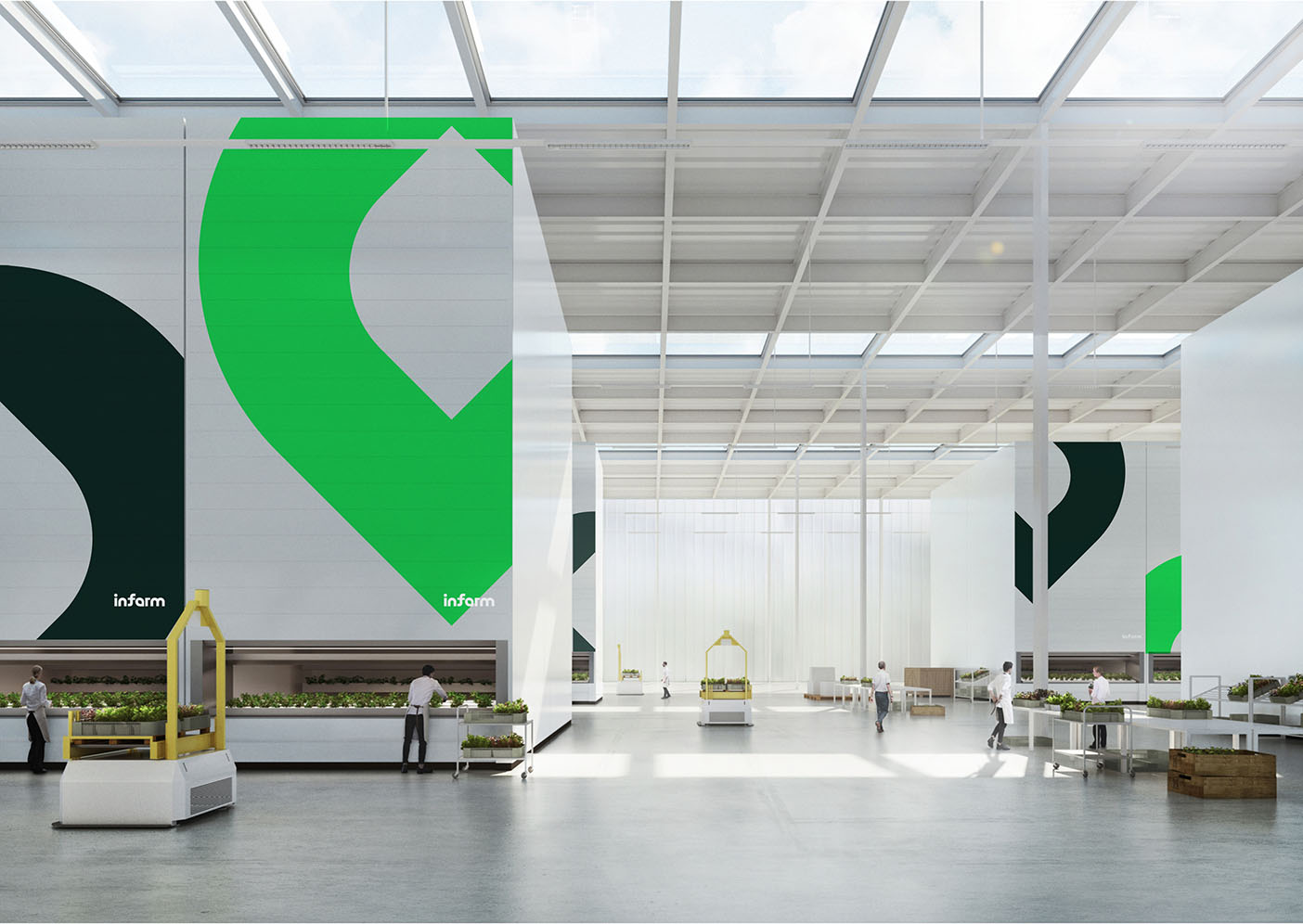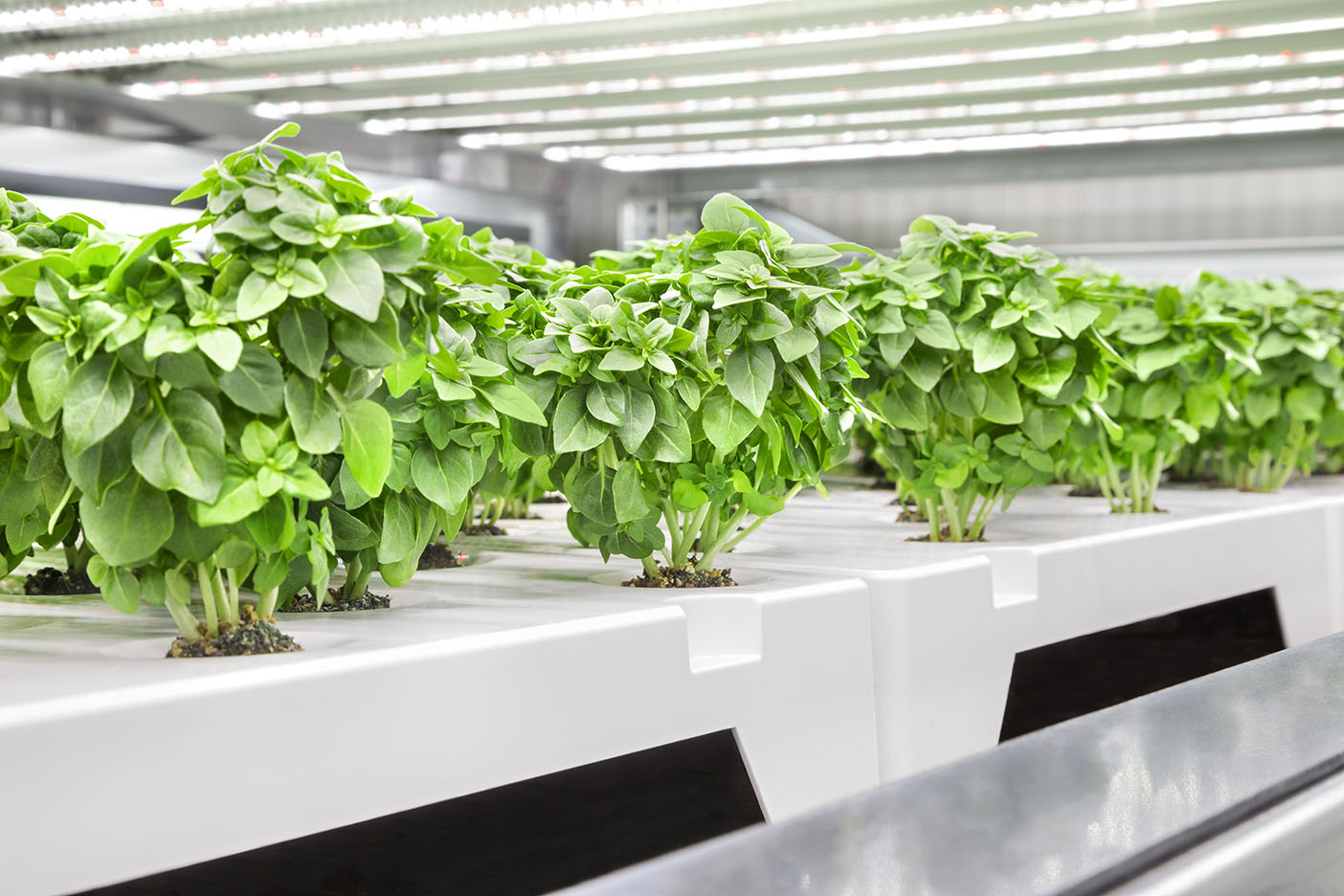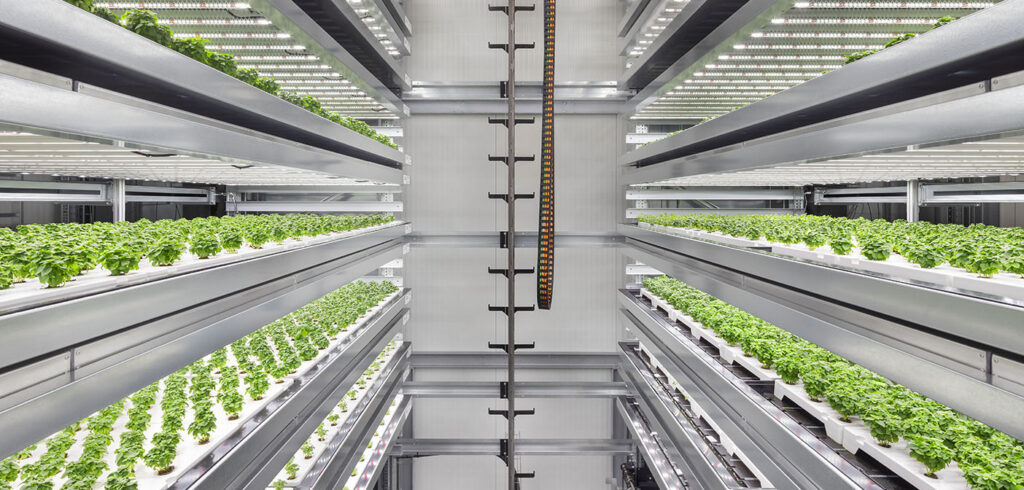Berlin-based Infarm, a vertical farming company whose produce is already available in thousands of stores in 30 cities across 10 countries, has opened the first of a new generation of high-capacity, automated modular growing centres – a local farm and distribution centre in one, which it says will be capable of generating the crop-equivalent of up to 10,000m² of farmland, with up to 400 times higher efficient food production than soil-based agriculture.
The cloud-connected, high-yield growing centres will join Infarm’s expanding global network of self-learning farms that improve plant yield, taste, and nutritional value constantly, while further reducing the use of natural resources. With 50,000m² of farming facilities and hundreds of farms in store locations, Infarm is already providing fresh produce to 50% of the world’s largest food retailers. The rapid deployment capability of its new high-yield growing centres will drive additional global growth and scalability to match the needs of retailers of any size in any location, with the goal of growing the network to 500,000m² by 2025.
Each growing centre comprises dozens of modular farming units, standing 10-18m high, occupying a 25m² ground footprint and requiring just six weeks to build, yielding the crop-equivalent of 10,000m² of farmland, according to the company. Infarm believes its modular, data-driven, and distributed approach – a combination of big data, IoT, and cloud analytics, in addition to rapid growth at a global scale – sets it apart from any other farming solution.

“Access to fresh, local and sustainable food is a growing challenge, as people shift towards cities and climate change accelerates,” said Erez Galonska, co-founder and CEO of Infarm. “Today we’re adding speed to scale with new technology that allows us to deploy a growing centre to any city in the world in a fraction of the time, space and capital investment of most large-scale farming solutions today. Both the farms and the software that powers them were designed to make fresh food more accessible for everyone, everywhere.”
“The entire Infarm network is connected to a central farming brain that gathers more than 50,000 growth, colour and spectral data points through a plant’s lifetime,” added Guy Galonska, co-founder and CTO at Infarm. “We’ve collected more than 300 billion data points throughout our farming network to date. These data enable us to perfect our growing recipes and improve yield, quality and nutritional value, while reducing the production price constantly.”
Infarm says the large-scale growing centres integrate farming units that can each save up to 10 million litres of water per year, compared to soil-based agriculture for similar crops, while contributing up to 40% energy savings over previous Infarm technologies, according to the company.
By 2025, Infarm says it plans to establish 100 such growing centres – equivalent to 1.5 million square metres of farmland and producing 450 million plants across its network, including expanding to new markets. This year, 15 Infarm growing centres are already planned/or under construction in major urban centres, including London, Paris, Copenhagen, Toronto, Vancouver, Seattle and Tokyo.

Overall, Infarm claims it uses 95% less water, 90% less transport and zero chemical pesticide than soil-based agriculture, with the majority of electricity use throughout the Infarm network coming from renewable energy. To date, the Infarm network has saved more than 40 million litres of water and 50,000m² of land.
Infarm growing centres – key features
- An automated mechanical farming system that is cloud controlled;
- Environmental settings like CO2, temperature, light, pH and growth cycles can be set, monitored, analysed online across all farms;
- Recirculates 20 litres of water condensation per hour and, saving more than up to 10 million litres of water per year compared to soil-based agriculture for similar crops;
- Smart LED management supports energy efficiency and contributes up to 40% energy savings and up to 25% savings on initial investment, according to Infarm.



